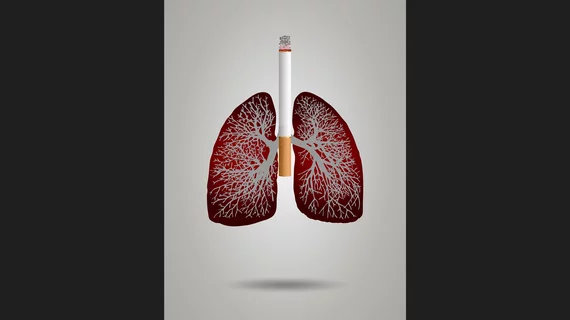Caught early, lung cancer has 80% overall survivability at 20 years—100% for some tumor types—yet few individuals avail themselves of LDCT screening
New findings to be presented at RSNA confirm that lung cancer is highly curable as long as it’s diagnosed early, as is often the case with low-dose CT screenings.
Claudia Henschke, PhD, MD, and colleagues at Mount Sinai Health System in New York City made the conclusion after tracking 20-year survival among 1,285 patients enrolled in the 30-year-old International Early Lung Cancer Action Program (I-ELCAP).
The patients were screened in the program and found to have early-stage lung cancer.
Analyzing this cohort’s associated medical records, Henschke and team found overall 20-year survival hit 80%.
What’s more, they found zero lung-cancer deaths at the 20-year mark among 139 patients with nonsolid cancers and 155 with part-solid cancers.
Additionally, the 20-year survival rate was 92% for patients with Stage 1A cancers that measured 10 millimeters or less.
Twenty-year survival dipped to 73% for the 991 patients who had solid nodules, prompting the researchers to state that lung-cancer consistency is “an important predictor of survival and should be considered in updated staging criteria, as has already been accepted in the pathologic criteria.”
Taken together, the authors suggest in their study abstract [1], the findings add heft to prior research showing the high curability of lung cancer that gets diagnosed during screening.
In press materials sent ahead of RSNA, the team comments that less than 6% of individuals eligible for LDCT receive it.
This goes far in explaining why just 16% of lung cancers are diagnosed at an early stage—and why the average five-year survival rate for all lung cancer patients is only 18.6%.
“More than half of people with lung cancer die within one year of being diagnosed, making it the leading cause of cancer deaths,” the researchers remark. “By the time symptoms appear, it is often too late.”
Screening surely doesn’t prevent cancers from developing, adds Henschke, who leads the Early Lung and Cardiac Action Program at the Icahn School of Medicine at Mount Sinai, but it is “an important tool in identifying lung cancers in their early stage when they can be surgically removed.”
The institution notes that the U.S. Preventive Services Task Force recommends annual lung cancer screening with low-dose CT in adults aged 50 to 80 years who have a 20 pack-year smoking history, which equals at least a pack a day for 20 years, and who currently smoke or have quit within the past 15 years.
Co-authors of the new study are David Yankelevitz, MD, director of the lung biopsy Service at Icahn Mount Sinai; Daniel Libby, MD, professor of medicine at Weill Cornell Medical Center; James Smith, MD, clinical professor of medicine at Weill Cornell Medical Center; Mark Pasmantier, MD, of Weill Cornell Medical Center; and Rowena Yip, MPH, senior biostatistician at the I-ELCAP at Icahn Mount Sinai.

